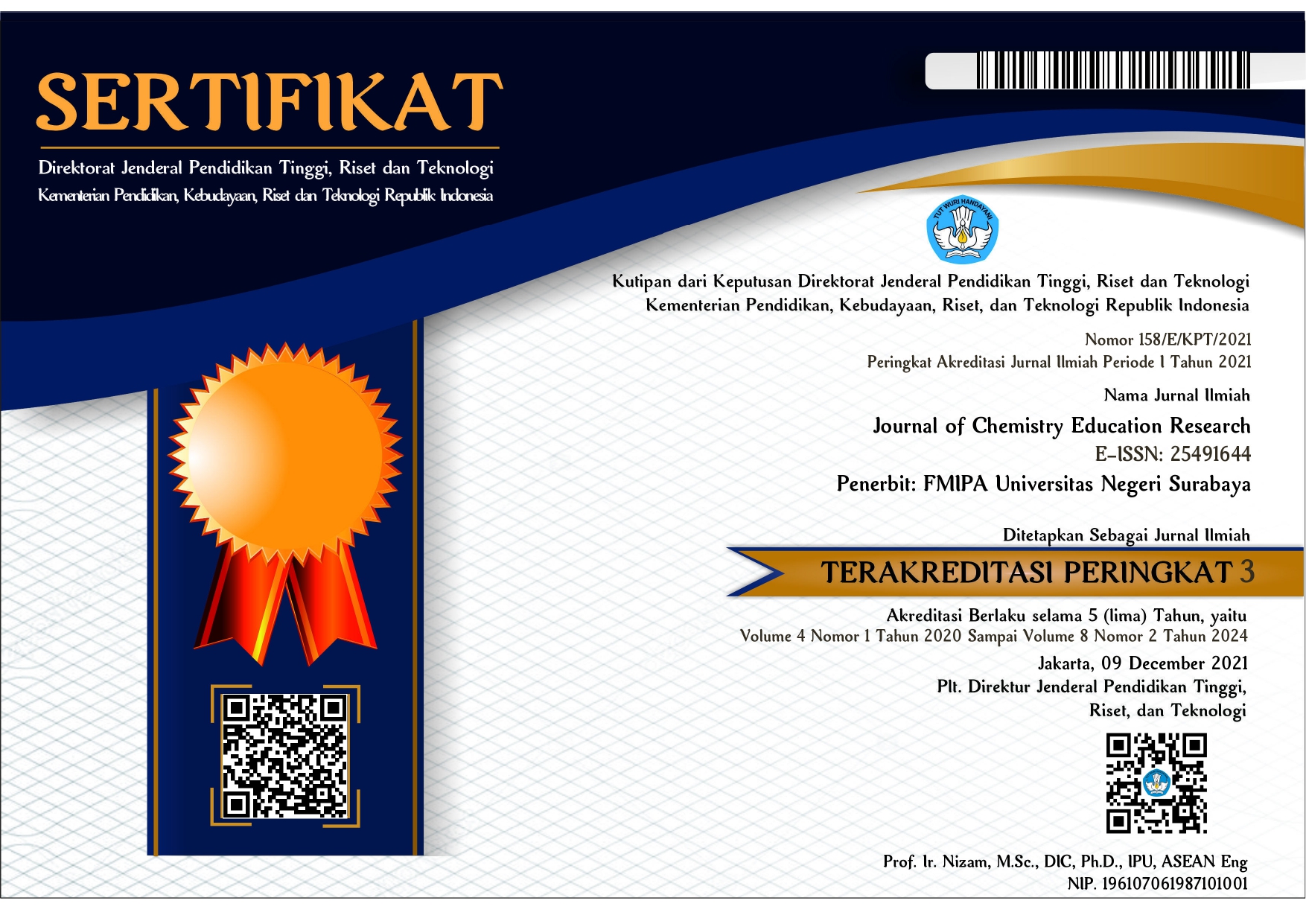Links
Author Guidelines
ARTICLE TITLE
(Center, Times New Roman 13, Bold, maximum 15 words in English )
(one single space, font size 13pt)
First Author*1, Second Author2, Third Author3 (Center, Times New Roman 11, Bold, space1)
(one single space, 11pt)
1 Affiliation (Study Program, Faculty, University) (Center, Times New Roman 10, single space)
2,3 Affiliation (Study Program, Faculty, University)
(one single space, 12pt)
*Corresponding author: email address (10pt, italic)
(two single space, 12pt)
Abstract. Using italic spaced 1 in a paragraph maximum of 150 words, and written in English. This abstract contains a clear description of the work, without the author's opinion and ends with keywords of 3-5 words. Abstracts for research articles contain research objectives, methods, and results. Abstract for thought-provoking articles contains objectives, methods, and ideas. (Single space, 11 pt.)
Keywords: content, format, article (maximum 5 keywords)
INTRODUCTION
Contains background, rationale (little literature review), and/or urgency of the problem, as well as research objectives for research articles. For articles the results of preliminary thoughts contain background, rationale (a little literature review), and the urgency of the problem. It is necessary to include references (relevant literature or research) as justification for the urgency of the research, by clearly indicating the name of the author and citation of the source in the form of the year of publication and the page where the manuscript is written.
Articles are typed in Times New Roman font size 11 pt, single space, Justify alignment, space after paragraph 4pt, printed on A4 paper (210x297mm) maximum 10 pages in Microsoft Word as an e-mail attachment to the address: jcer@unesa.ac.id.
Articles are written in English in essay format, accompanied by the title of each section of the article. The title of the article is printed in all capital letters for 13 pt. The section heading level is expressed in a different typeface (all section and subsection headings are written in bold or bold and italic), and do not use numbers in section headings.
HEADING 1 (CAPITALIZE LETTERS, BOLD, ALIGN LEFT)
Rank 2 (Capitalize and Non-Capitalize letters, Bold, Align Left)
Rank 3 (Capitalize and Non-Capitalize Letters, Bold-Italic, Align Left)
METHOD
Contains the research design, research objectives (population and sample), data collection techniques and instrument development, as well as data analysis techniques.
RESULT AND DISCUSSION
Research results are presented in the form of graphs, tables, or descriptive. Numbers should be given to pictures, graphs, photos, tables, and chemical reactions in order.
The title in the table is given above the table from the left, all words are capitalized except for conjunctions. If more than one line is written in single space.
Table 1 Student Activities in Learning Material A (10 pt, Bold)
(one single space, 10 pt)

(one single space, 10 pt)
Figure Format
Each figure must be given a caption under the it, from the left, all words begin with capital letters except conjunctions, and are spaced 1 space apart from the picture. If more than 1 line, the lines are given a single space. All images must be numbered sequentially.

Figure 1 Lecture Implementation (10 pt, Bold)
(one single space, 10 pt)
If the picture or table size is large, then it is placed in the center of the page (center alignment). If the figure or table is small, place it in the center column, either in column 1 or column 2. Chemical equations or mathematical equations must be numbered sequentially. Numbering must start and end with an opening parenthesis and a closing parenthesis and is right aligned.
The discussion is focused on linking the data and the results of their analysis with the problem or research objective and the wider theoretical context. The discussion is written attached to the data discussed.
CONCLUSIONS AND SUGGESTIONS
Conclusions can be generalizing findings according to research problems, they can also be in the form of recommendations for next steps.
Suggestions can be in the form of input for the next researcher, it can also be implied recommendations from research findings.
ACKNOWLEDGEMENT
If there is, write an acknowledgement.
REFERENCES
At least 80% of the references is in the form of literature published in the last 10 years. The references used are primary sources in the form of research articles in journals or research reports (including theses, theses, dissertations). References and quotations are written at the end of the sentence using consecutive numbers, such as [1] or [1, 2]. The bibliography is arranged chronologically, following the APA rules, and only contains sources that are referenced, some of which are adjusted to the following details.
[1] Book Title: Arikunto, S. (2006). Prosedur penelitian. Jakarta: PT Rineka Cipta.
[2] Articles in a book collection of articles: Russel, T. 1998. An Alternative Conception: Representing Representation. Dalam P.J. Black & A. Lucas (Eds.), Children’s Informal Ideas in Science (h. 62-84). London: Routledge.
[3] Articles in online journals: Castner, M. & Coromant, S. Simplifying Turning of Stainless Steel. http:/www.cncmagazine.com/archive01/v2i04j-stainless.htm, accessed on 1 April 2006


